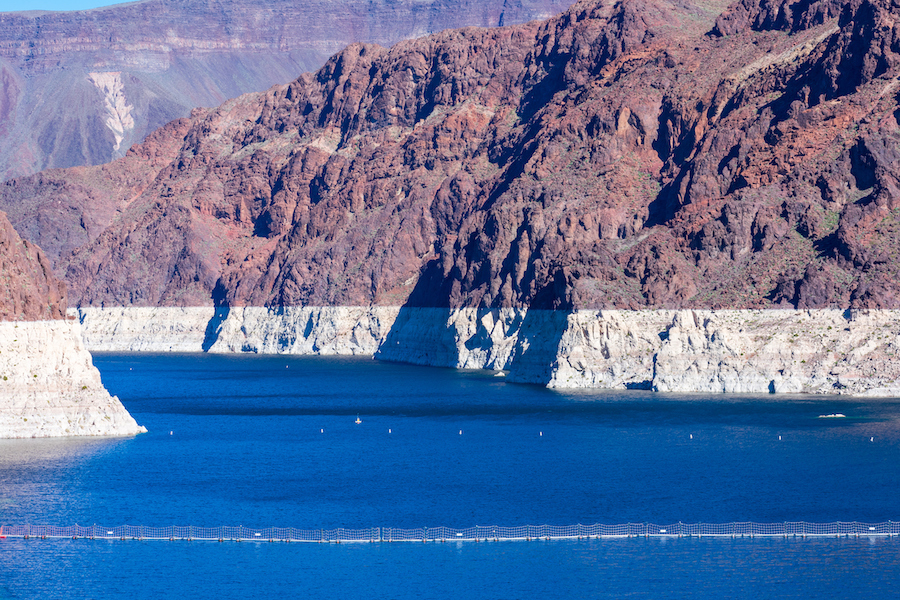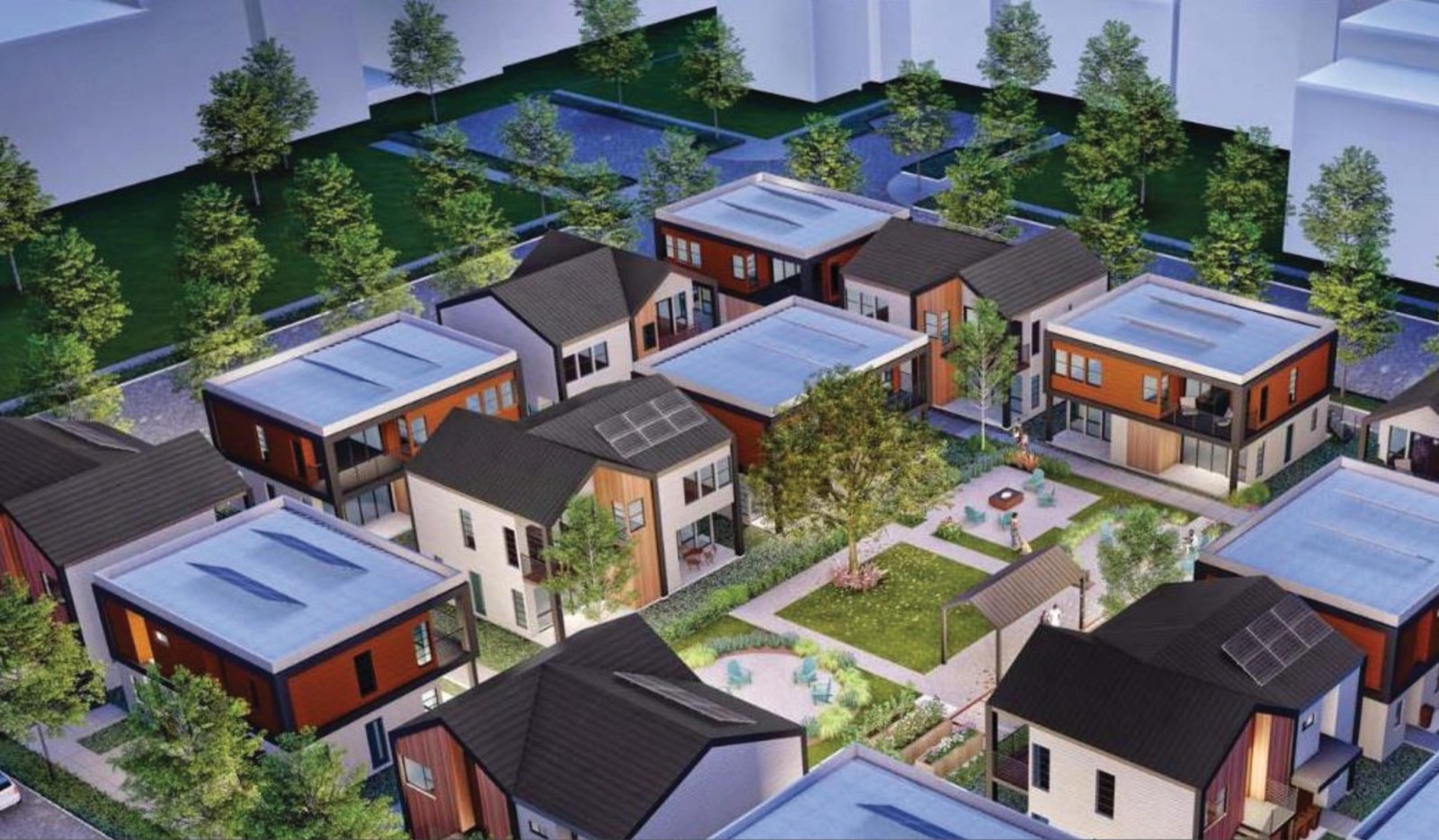
Until it rains again, all the western states (including California) are being fried by a deadly drought. We have seen this before: seven years ago we had to reduce the entire State’s water consumption by 20% to get through that crisis. No one knows how long this newest drought will last. But we all know the symptoms: super heated air setting temperature records everywhere (116 degrees in Portland, Oregon), ash and air pollution as far away as New York City, and rampant forest fires everywhere. Now other interactive effects are starting to kick in. Certain towns (Oakley, Utah among others) are not issuing building permits because they simply have no water, and at Hoover dam, whose water level is more than 130 feet below normal, officials are going to have to choose between generating power or providing water.
In this dangerous ecological moment the State of California is mandating that our City permit the construction of 8895 unnecessary new units that will supposedly increase our population about 20% over the next eight years. Depending on how those nominal 18,000 people are housed and their demographics, we can expect the water consumption of our 91,000 person city to rise between 17 and 23% from 2019’s potable water demand of about 11,030-acre feet. According to the City’s 2021 Draft Water Management Plan, the following populations and water demand requirements are anticipated without adjusting for additional conservation measures:
I chose 2019 as a baseline year because that was the last typical year not distorted by the Covid disruption and the massive tourism collapse. It’s unclear why the City’s projections assume virtually no growth from 2030 to 2040, but their base of 109,000 is very close to our probable population if the unlikely full buildout of the required 8895 units actually occurs.
Conservation Pays off
This is not to discount the City’s conservation efforts. The City’s water reduction efforts have really paid off handsomely with demand falling 15.4% from 2014 to 2019 while the population was essentially flatlining (91,619 to 91,570) during the same period. This is a significant improvement to our City’s water resilience and a credit to our citizens’ and businesses’ adjusting their water use appropriately for life in a desert with only14” of rain a year.
So where will all this “new” water come from? In 2019 our 10 city wells produced about 10,042-acre feet with the balance needed coming from the Metropolitan Water District’s (MWD) Colorado River, the western flank of the Sierras and also a modest 1 percent from water recycling. In the 2016-2020 time frame, 35% of our water need was from the MWD. But that external source is not only vulnerable to the same drought cooking us all, but since they are on the other side of the San Andreas Fault, which is capable of going off at any time and cutting off the aqueducts that might, in some scenarios, require 18 months to repair. During that reconstruction period we would be entirely dependent on our local groundwater.
No Margin of Error
We are now putting all our marbles on the capacity of our local groundwater basin. In 2018, a City study estimated that the sustainable yield of the Santa Monica Ground Water Basin (including the coastal zone near Marina Del Rey which we have not yet tapped into) was between a low of 10,800-acre feet to a high of 13,595-acre feet. This matches perfectly (perhaps too perfectly) our possible next 20 year demand of 11,000 to 13,600-acre feet, but with NO MARGIN OF ERROR. In other words we may already be, with just our 2019 pumping level, already slightly exceeding our sustainable groundwater capacity or may still have a tiny margin of about 23% left. No one knows for sure. Not only are we beset by “normal” drought/monsoon annual fluctuations, but our groundwater basin is already shared by three golf courses and now other cities (Los Angeles, Culver City and Beverly Hills) which overlie the same basin, and which may soon want to start tapping into this precious resource. Finally our current wells are set far from the coast on the City’s eastern border, but escalating demand may push us to pump from closer to the ocean where we might encounter saltwater intrusion accelerated by sea level rise.
The thing to remember is that these all are just estimates with a wide variation even among the City’s own experts. For example, a 2007 MWD study for the entire region found that the natural safe annual yield of our groundwater basin was only about 7,500 acre feet/year noting that we still don’t know the full extent of the storage and recharge capacity of our basin. And finally when the City estimated the groundwater basin’s capacity (which is recharged by rainfall in the Santa Monica Mountains), after a five year drought it would shrink to about 7,200 acre feet/year, or only slightly more than half of what we might need for a fully built out putative 109,000 person City.
So in this very uncertain water dynamic, where will we get the cushion or safety margin to make up for the certain mismatch between reality and our well intentioned guesses? The City was hoping to achieve water independence (getting all its water from its groundwater basin in a sustainable manner) by 2020, now that’s been pushed back to 2023 and no one believes it’s obtainable in two short years much less after a possible 8 year construction boom.
Couldn’t we just buy more water from the MWD if we start falling short from our own ground water? Theoretically yes since we have a nominal 7,400 acre feet of by right water allocation from MWD. But that only works if there is actual water available. The Colorado River watershed is crisscrossed with historical water allocations that exist on paper only but couldn’t survive the reality test of a protracted drought squeeze. Those allocations were determined decades ago when that river was much more full. Likewise, in 2014 Grantham and Viers estimated that the California rivers are over subscribed with theoretical water allocations that are five times the available mean annual runoff. When the Sierra snowpack is at about 60% of normal, you can see that water wars, pitting agricultural users against urban demand, are just around the corner. And, as water becomes more expensive, wealthier cities will start outbidding poorer jurisdictions.
Your City has anticipated this inevitability by raising water fees about 17% each year for the next five years. This 5 year doubling of water fees will hopefully reduce demand, fund the aging water infrastructure improvement needed for the imaginary State-required population boom, and put us in a somewhat better bargaining position for the few drops left when the regional water supply really collapses. But it also puts our residents and businesses in the paradoxical position that their reward for exceptional water conservation is water that is twice as expensive.
Converting Dollars to Gallons
In the meantime the City has a feel good program (water neutrality) where any new development cannot use more water than was originally consumed on that particular lot. Naturally this completely fails to reduce demand, as it is impossible to add 20% to your built out city’s population without increasing water demand. The way out is for developers, who propose to raise water demand at particular projects, to pay extra fees. These extra fees then get aggregated and the City uses that money to try to sustainably increase its water supply. The question then becomes how efficient is the City in converting dollars into gallons?
One of the more successful efforts in this conversion is the new underground water treatment plant under construction between the Civic Center auditorium and the Court House. This plant joins sewer, street runoff, and seaside brackish water, treats it to partial purity, and then uses it to feed the City’s grey water system to irrigate parks and possibly for toilets in dual piped buildings. This water recapture and partial treatment recycles water and is expected to produce about 1550 acre-feet per year, a very valuable 12 to 15% cushion for our increasingly stressed underground water basin. This is the scale of infrastructure improvement needed to give us a credible water cushion.
Finally when the cost of water doubles, desalination may become economically feasible. While taking up lots of space, requiring lots of power and having substantial negative environmental effects, desalination of seawater may be our only long term safety valve if its negatives can be mitigated. Unfortunately the City has yet to invest in long term preparation e.g. buying the land (possibly with neighboring cities) to position us to make that transition possible if/when it becomes necessary.
Water is essential for all cities. We are not exempt and while somewhat buffered by our relative wealth, we still need to be very prudent in managing both the supply and demand of this very limited essential resource.
By Mario Fonda-Bonardi for S.M.a.r.t Santa Monica Architects for a Responsible Tomorrow
Thane Roberts, Architect, Robert H. Taylor AIA, Ron Goldman FAIA, Architect, Dan Jansenson, Architect, Building and Fire-Life Safety Commission, Samuel Tolkin Architect, Mario Fonda-Bonardi, AIA, Planning Commissioner,
Marc Verville CPA Inactive, Michael Jolly, AIR CRE.
For previous articles see www.santamonicaarch.wordpress.com/writing













